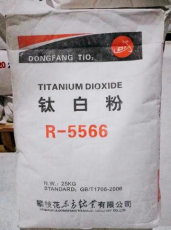
Jul . 31, 2024 16:13 Back to list
Exploring the Development and Production Processes of Nano Titanium Dioxide in Modern Factories
The Rise of Nano Titanium Dioxide Factories A Technological Revolution
In recent years, the field of nanotechnology has witnessed remarkable advancements, with nano titanium dioxide (TiO2) emerging as a groundbreaking material across various applications. The establishment of nano titanium dioxide factories marks a significant step in harnessing the unique properties of this nano-sized material. This article explores the importance of these factories, the applications of nano titanium dioxide, and the potential challenges they face.
What is Nano Titanium Dioxide?
Titanium dioxide is a naturally occurring oxide of titanium, known for its impressive properties, including excellent UV resistance, high refractive index, and non-toxic nature. When reduced to the nanoscale, titanium dioxide exhibits enhanced characteristics, such as improved photocatalytic activity, increased surface area, and superior strength. These properties make nano titanium dioxide a valuable ingredient in a wide variety of industries, ranging from cosmetics to construction and environmental applications.
Applications of Nano Titanium Dioxide
One of the most prominent uses of nano titanium dioxide is in the production of sunscreens. Due to its ability to reflect and scatter UV rays, it offers effective protection against harmful solar radiation, making it a preferred choice for many cosmetic companies. Additionally, the transparent nature of nano TiO2 allows for a cosmetic finish that doesn't leave a white residue on the skin, thereby improving user experience.
In the paint and coatings industry, nano titanium dioxide is utilized for its excellent pigmentation and durability. It enhances the whiteness and brightness of paints while providing resistance to fading and chalking. Furthermore, the photocatalytic properties of nano TiO2 contribute to self-cleaning surfaces, which actively break down organic pollutants when exposed to sunlight.
The food industry has also recognized the potential of nano titanium dioxide as a food additive for its role as a whitening agent. However, this application comes with debates regarding food safety and regulatory standards, prompting the need for ongoing research and dialogue.
nano titanium dioxide factories

In environmental applications, nano titanium dioxide is employed in wastewater treatment and air purification systems. Its photocatalytic capabilities allow it to break down harmful pollutants into less harmful substances when exposed to UV light. This application highlights the dual role of nano TiO2 as both a product and a solution for environmental challenges.
Challenges and Considerations
While the emergence of nano titanium dioxide factories brings many benefits, it also presents several challenges. One significant concern involves the potential health and environmental risks associated with the ingestion or inhalation of nanoparticles. Active research is being conducted to evaluate the toxicological impacts of nano TiO2, and regulatory bodies are establishing guidelines to ensure safe usage.
Additionally, the high production costs associated with manufacturing nano-sized materials can be a barrier to widespread adoption. Factories need to invest in advanced technology and processes to produce high-quality nano titanium dioxide at a competitive price.
Another critical consideration is the sustainability of the production processes. As the global demand for nano titanium dioxide increases, factories must adopt eco-friendly practices to minimize waste and energy consumption.
Conclusion
The establishment of nano titanium dioxide factories represents a crucial development in nanotechnology and its applications. As industries continue to explore the diverse functionalities of this extraordinary material, it is imperative to address the associated challenges responsibly. With appropriate research, regulation, and innovation, nano titanium dioxide has the potential to play a vital role in advancing a wide range of sectors, contributing to safer, more efficient, and sustainable solutions for the future.
-
Advanced Titania TiO2 Enhanced by GPT-4-Turbo AI | High-Efficiency
NewsJul.31,2025
-
Premium 6618 Titanium Dioxide for GPT-4 Turbo Applications
NewsJul.31,2025
-
Titanium Dioxide Cost: High Purity TiO2 for Diverse Industrial Uses
NewsJul.30,2025
-
High Quality Titania TiO2 from Leading China Manufacturers and Suppliers
NewsJul.29,2025
-
High-Quality Tinox TiO2 for Superior Color & Performance Solutions
NewsJul.29,2025
-
High Quality Titania TiO2 from Leading China Supplier & Manufacturer
NewsJul.29,2025
